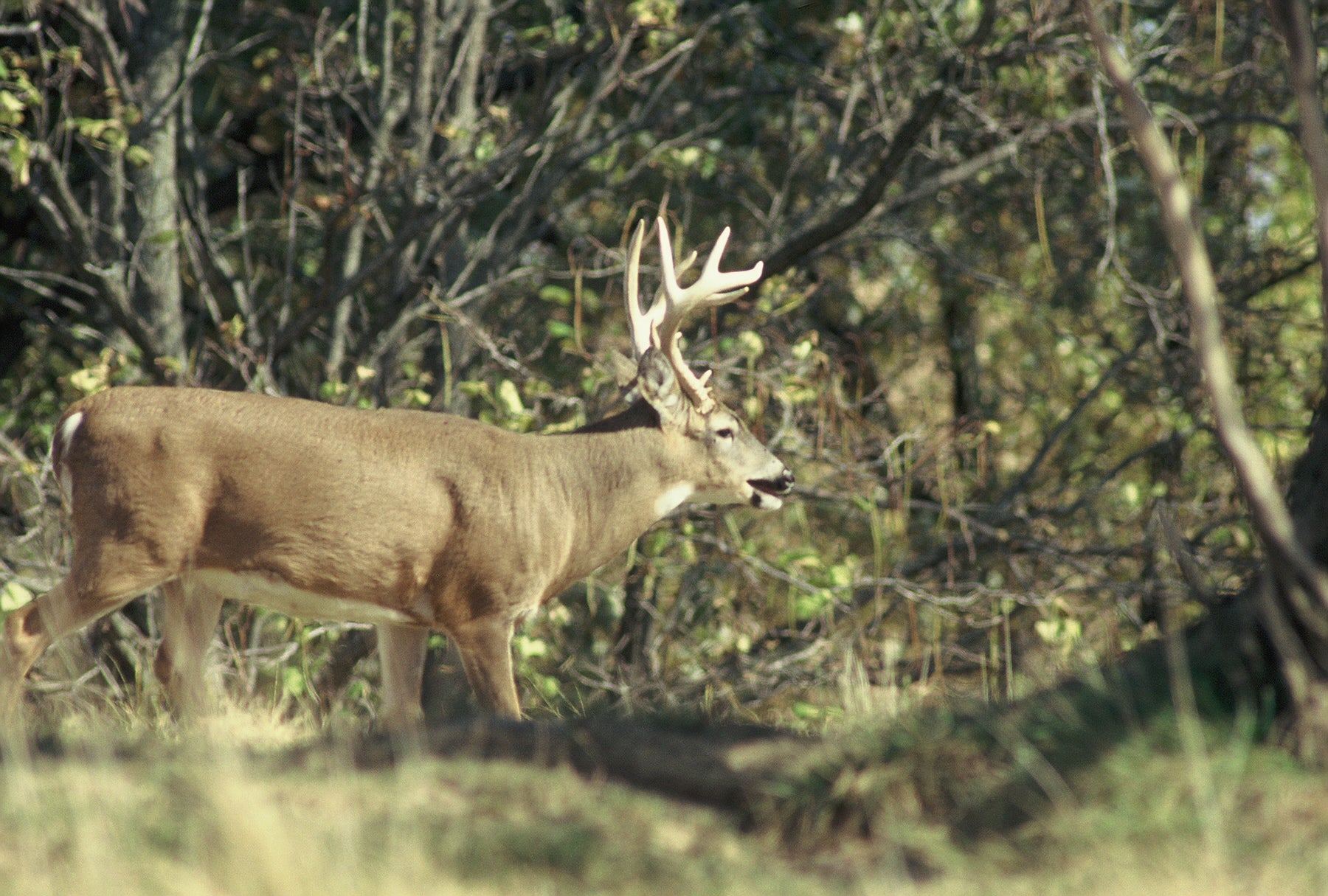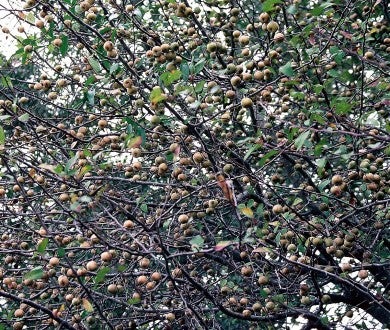Hunt Wild Fruit Whitetails
Bob McNally 10.19.15

Wild fruits are among the most important foods for deer during bow season because it’s available to game long before acorns are ripe or corn fields are cut. Further, by the time most firearms seasons roll around, fruit has long since fallen and been consumed. Thus areas that draw deer and hold them for their fruity foods are pretty much the sole domain of bowhunters.
Locating wild fruits can be as challenging as finding any other preferred natural deer food, like acorns or greenbrier. There’s little substitute to wearing out your boot soles in scouting for fruit, and don’t do all your looking at the ground. Often the very best fruit trees have little or no fruit near your feet. A persimmon tree or grape vine hammered by feeding deer rarely has fruit laying around under it. Wild fruit usually doesn’t last long once it hits terra firma. If deer don’t eat it, raccoons, foxes, opossums, hogs, and bugs do.
With that in mind, keep your eyes open to “feed” sign on the ground. Deer droppings and tracks are obvious, but sometimes the soil will be stomped heavily, and leaves and sticks will be flipped around unusually from animals nosing under it like they do for acorns. When you locate a spot having concentrated tracks, droppings, and flipped leaves, turn your eyes up and look for trees bearing fruit. Binoculars help, and if the site is slightly inclined, be sure to look up-hill, since apples, pears, plums, and grapes roll.
If you find a tree bearing fruit with deer sign on the ground, but no fruit down for deer to eat, take time to shake the tree and its limbs. Knock as much fruit as possible to the ground to attract deer. I’ve climbed trees to cut out fruit, careful not to use my hands, but employing a buck saw or knife to keep from contaminating fruit with human scent. Grapes on tall, winding vines can be tough to reach. I have a friend who uses a pole saw for trimming tall fruit trees and clipping off ripe grapes on vines winding through timber.
Some of the best bearing fruit trees are found around homesteads near woods openings and field edges. Such trees yield a lot of fruit because sunlight can reach them well, which helps them flower (and for each flower there is fruit). Many such fruit trees also benefit from fertilizers, either from the old homesteads or because they’re growing beside active farm fields.
Some of the most fruit-heavy apple and persimmon trees you’ll find are in fence rows between fields and around field edges. Many such spots in the comparative open will have lots of deer tracks and droppings under them, but because deer must walk across open fields, they’re usually visited at night. But you still can hunt such “open” fruit spots, just “back track” the game to where deer are leaving a thicket, point of hardwoods, or pine plantation.
“Open” fruit trees like that are notorious for attracting does, and some bowhunters shun them for that reason. But such spots draw bucks, too, because as the rut approaches, the ladies bring the gentlemen.
Be sure to “back trail” doe tracks leading to open, obvious fruit trees in fields or around old farms. Often as you get closer to heavier cover you’ll discover buck sign. It may be several hundred yards from where the fruit trees are, but bucks, does, and yearlings are holding in the area because of the fruit.
